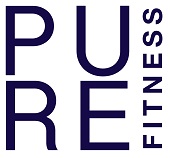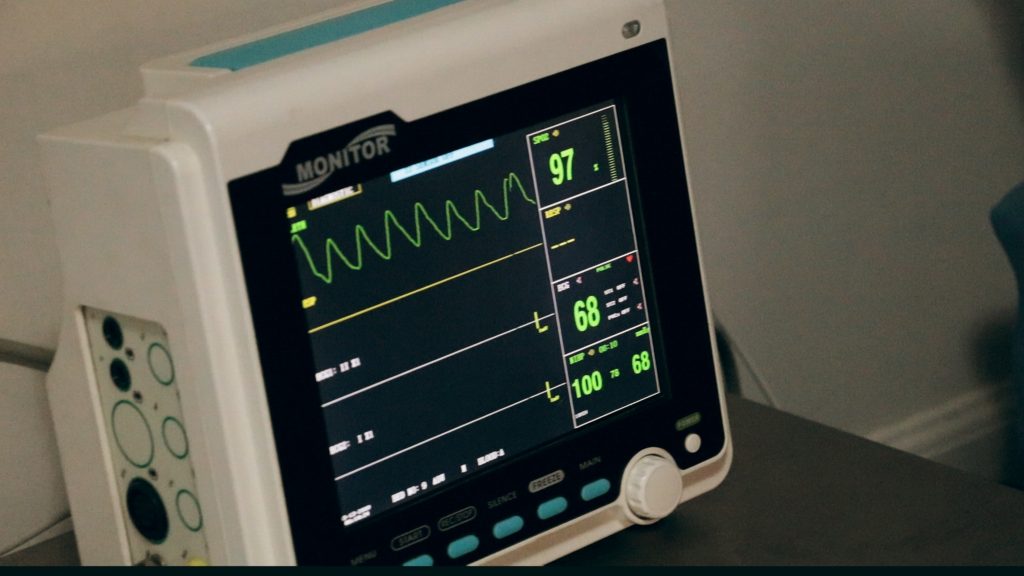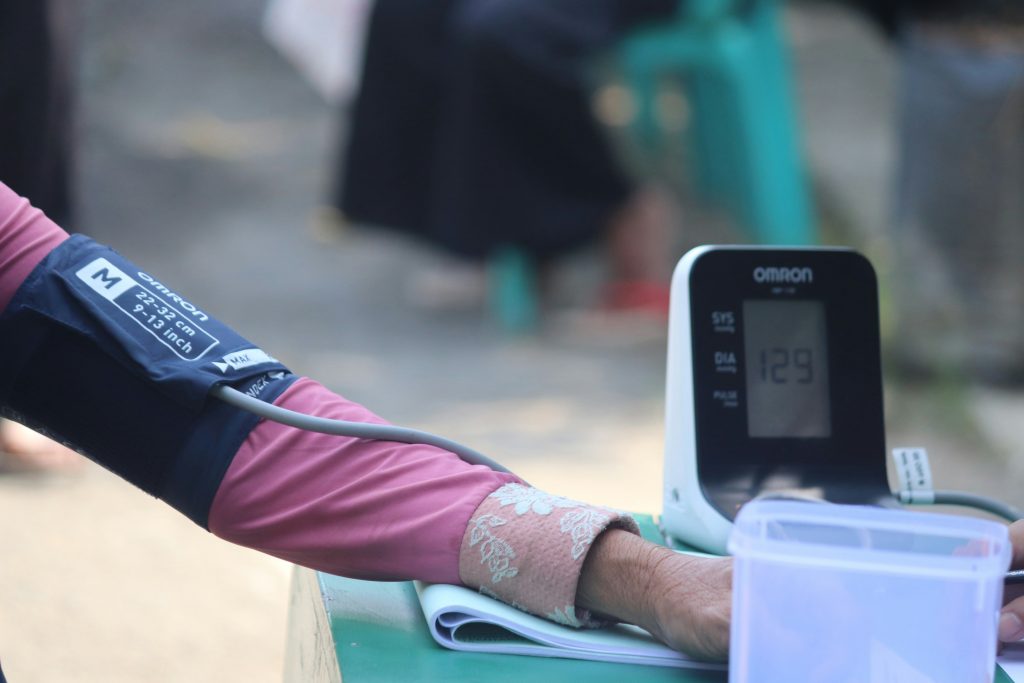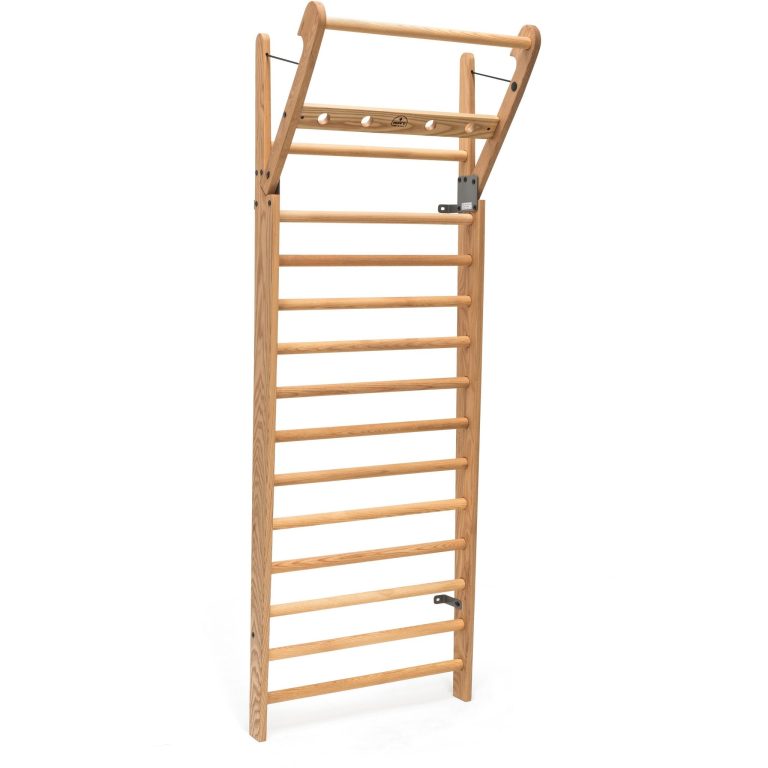Maintaining a healthy blood pressure level is essential for your overall well-being. In this article, we will explore simple yet effective ways to ensure your blood pressure stays within a healthy range. By making small lifestyle adjustments and incorporating healthy habits into your daily routine, you can take control of your blood pressure and promote a healthier and happier life.
Table of Contents
ToggleUnderstanding Blood Pressure
What is blood pressure?
Blood pressure refers to the force of blood against the walls of your arteries as your heart pumps it around your body. It is represented by two numbers, the systolic pressure and the diastolic pressure. The systolic pressure is the top number, which measures the pressure in your arteries when your heart beats. The diastolic pressure, on the other hand, is the bottom number that measures the pressure in your arteries when your heart is at rest between beats. Blood pressure is an essential indicator of your cardiovascular health and plays a crucial role in overall well-being.
Understanding blood pressure readings
Blood pressure readings are expressed as a ratio. The normal range for blood pressure is typically around 120/80 mmHg (millimeters of mercury). The first number represents the systolic pressure, and the second number represents the diastolic pressure. If your blood pressure falls within this range, it is considered to be within a healthy range. However, if your readings consistently exceed 130/80 mmHg, it may indicate that you have high blood pressure, also known as hypertension. It is important to monitor and manage your blood pressure to maintain a healthy level and reduce the risk of associated health conditions.
Dietary Recommendations
Reduce sodium intake
Reducing your sodium intake can have a significant impact on managing your blood pressure. Sodium is a mineral found in salt and various foods, and it can cause your body to retain water, leading to increased blood pressure. To reduce your sodium intake, you can avoid processed and packaged foods, limit the use of table salt while cooking, and opt for fresh ingredients when preparing your meals. Additionally, reading food labels and choosing lower sodium alternatives can also help in reducing your overall sodium consumption.
Increase potassium-rich foods
Potassium is a mineral that helps balance the sodium levels in your body. Consuming foods rich in potassium can help counteract the effects of sodium, thus lowering your blood pressure. Some potassium-rich foods include bananas, oranges, avocados, spinach, sweet potatoes, and beans. Incorporating these foods into your diet can be an effective way to support healthy blood pressure levels.
Follow the DASH diet
The DASH (Dietary Approaches to Stop Hypertension) diet is a well-known eating plan that has been proven effective in reducing blood pressure. This diet emphasizes consuming fruits, vegetables, whole grains, lean proteins, and low-fat dairy products. It also encourages reducing sodium and sugary foods. By following the DASH diet, you can not only manage your blood pressure but also improve your overall cardiovascular health.
Limit alcohol consumption
Excessive alcohol consumption can raise your blood pressure and also reduce the effectiveness of blood pressure medications. It is recommended to limit alcohol intake to moderate levels, which equates to one drink per day for women and two drinks per day for men. By limiting your alcohol consumption, you can help maintain a healthy blood pressure level and reduce the risk of associated health complications.
Moderate caffeine intake
Caffeine can cause a temporary spike in blood pressure, especially if you are not a regular caffeine consumer. While the effects may vary from person to person, it is advisable to consume caffeine in moderation. Limiting your intake of caffeine-rich beverages such as coffee, tea, and energy drinks can contribute to maintaining a healthy blood pressure level.
Maintaining a Healthy Weight
Calculate your BMI
Calculating your Body Mass Index (BMI) is a helpful tool in determining whether you are at a healthy weight for your height. To calculate your BMI, divide your weight in kilograms by your height in meters squared. A BMI within the range of 18.5 to 24.9 is considered healthy. If your BMI is above this range, it may indicate that you are overweight or obese, which can lead to increased blood pressure. By knowing your BMI, you can set realistic goals for achieving and maintaining a healthy weight.
Adopt a healthy eating plan
Maintaining a healthy weight often involves adopting a balanced and nutritious eating plan. This includes consuming a variety of fruits, vegetables, whole grains, lean proteins, and healthy fats. Portion control is also important when striving for a healthy weight. By fueling your body with nutritious foods and avoiding excessive calorie intake, you can effectively manage your weight and subsequently support a healthy blood pressure level.
Engage in regular physical activity
In addition to adopting a healthy eating plan, regular physical activity is crucial for maintaining a healthy weight and managing blood pressure. Engaging in aerobic exercises such as brisk walking, jogging, swimming or cycling can help improve heart health, strengthen muscles, and enhance overall fitness. Physical activity also helps in reducing stress and promoting the elimination of excess weight. By incorporating exercise into your daily routine, you can provide numerous benefits to your overall well-being, including keeping your blood pressure in check.
Regular Exercise
Choose aerobic activities
Aerobic activities, also known as cardiovascular exercises, play a key role in maintaining a healthy blood pressure level. These exercises increase your heart rate, which strengthens your heart and improves its ability to pump blood effectively. Some examples of aerobic activities include jogging, dancing, cycling, swimming, and brisk walking. Aim for at least 150 minutes of moderate-intensity aerobic activity per week, or 75 minutes of vigorous-intensity aerobic activity if your fitness level permits.
Include strength training
While aerobic activities are essential, incorporating strength training exercises into your routine can further contribute to managing your blood pressure. Strength training helps build lean muscle mass, which in turn increases your metabolism and helps burn calories more efficiently. It is recommended to engage in strength training exercises at least two days a week. This can involve using free weights, resistance bands, or even your body weight to perform exercises such as squats, lunges, push-ups, or lifting weights.
Set achievable goals
Setting achievable goals is crucial for maintaining regular exercise habits and managing your blood pressure effectively. Start by setting specific, measurable, achievable, relevant, and time-bound (SMART) goals that align with your current fitness level and lifestyle. For instance, you could aim to exercise for 30 minutes every day or complete a certain number of strength training sets each week. By tracking your progress and celebrating each achieved milestone, you can stay motivated and committed to maintaining a healthy blood pressure level.
Monitor your progress
Monitoring your progress is vital for staying on track with your exercise routine and managing your blood pressure effectively. Keep a record of your physical activity, noting the type of exercise, duration, and intensity. This can help you identify patterns, determine areas for improvement, and provide motivation to continue striving for a healthy blood pressure level. Additionally, consider using a fitness tracker or smartphone app to monitor your heart rate and track the calories burned during each workout session.
Stress Management
Identify and manage stressors
Stress can have a significant impact on your blood pressure, causing it to rise temporarily or even chronically if left unmanaged. It is important to identify the sources of stress in your life and devise strategies to manage them effectively. This may involve reevaluating your priorities, learning to say no, delegating tasks, or seeking support when needed. By addressing and managing stressors, you can reduce the strain on your cardiovascular system and support a healthy blood pressure level.
Practice relaxation techniques
Relaxation techniques are an effective way to lower blood pressure and manage stress. Techniques such as deep breathing exercises, meditation, yoga, and progressive muscle relaxation can help reduce anxiety and promote a sense of calm. Incorporating these techniques into your daily routine can provide great benefits for your overall well-being and blood pressure management.
Engage in hobbies or activities you enjoy
Engaging in hobbies or activities that you enjoy can help alleviate stress and promote a positive mindset. Whether it’s painting, playing a musical instrument, gardening, or reading, finding time for activities that bring you joy and relaxation can significantly contribute to managing your blood pressure. Make it a priority to schedule regular leisure time and engage in activities that help you unwind and recharge.
Connect with others
Maintaining healthy relationships and social connections can be beneficial for managing stress and subsequently supporting a healthy blood pressure level. Surrounding yourself with supportive friends and family can provide emotional support and a sense of belonging. Additionally, consider joining clubs, support groups, or engaging in community activities to expand your social network. By nurturing positive relationships, you can improve your overall well-being and better cope with stressors that may impact your blood pressure.
Limiting Alcohol and Tobacco
Understand the effects of alcohol on blood pressure
Alcohol consumption can have a direct impact on blood pressure levels. Heavy or chronic drinking can raise blood pressure and, over time, contribute to the development of hypertension. If you consume alcohol, it is advisable to do so in moderation. Alongside adhering to moderate drinking limits, it is important to be mindful of your individual tolerance and the effects that alcohol may have on your blood pressure. Discussing alcohol consumption with your healthcare professional can provide further guidance and support.
Seek support for smoking cessation
Smoking is a significant risk factor for high blood pressure and numerous other health conditions. Nicotine, found in cigarettes and tobacco products, constricts blood vessels and elevates blood pressure. Quitting smoking is one of the most impactful lifestyle changes you can make to improve your overall health, including blood pressure management. Seek support from healthcare professionals, join smoking cessation programs or support groups, and consider pharmacological aids to assist in your journey towards quitting smoking.
Monitoring Blood Pressure
Measure blood pressure regularly
Regularly monitoring your blood pressure is essential for maintaining a healthy level and promptly identifying any potential fluctuations. Home blood pressure monitors are widely available and easy to use. It is recommended to measure your blood pressure at the same time each day, ensuring you are in a relaxed state and have not consumed caffeine or engaged in physical activity beforehand. By consistently monitoring your blood pressure, you can track any changes and take appropriate action if necessary.
Know how to use a home blood pressure monitor
Using a home blood pressure monitor accurately is crucial for obtaining reliable readings. Familiarize yourself with the instructions provided with your specific monitor and ensure you are using it correctly. It is advisable to have your healthcare professional demonstrate the proper technique during a routine check-up. Additionally, regularly calibrate and maintain your monitor to ensure accurate readings. By using a home blood pressure monitor effectively, you can actively participate in self-care and gain important insights into your blood pressure levels.
Keep a blood pressure log
Keeping a blood pressure log can provide a comprehensive overview of your blood pressure readings over time. Record your measurements along with the date, time, and any relevant factors such as medication changes, stress levels, or lifestyle adjustments. This log can help you and your healthcare professional identify patterns, evaluate the effectiveness of your lifestyle modifications or medications, and make informed decisions to maintain a healthy blood pressure level. Sharing this log with your healthcare professional during appointments can facilitate meaningful discussions and contribute to effective blood pressure management.
Medication and Treatment
Consult with a healthcare professional
If you have been diagnosed with high blood pressure, it is essential to consult with a healthcare professional. They can assess your specific situation, provide guidance, and recommend appropriate treatment options. Your healthcare professional will take into account various factors such as your overall health, lifestyle habits, and potential risk factors to determine the most suitable course of action. It is important to be open and honest about any concerns or questions you may have to ensure your treatment plan is tailored to your needs.
Adhere to prescribed medications
If medication is prescribed to manage your blood pressure, it is crucial to take it as directed by your healthcare professional. Medications work by reducing the force of blood flow or relaxing blood vessels, helping to lower blood pressure levels. Adhering to your prescribed medication schedule and reporting any side effects or concerns to your healthcare professional is vital for maintaining a healthy blood pressure level. Remember that blood pressure medications may require adjustments over time, so regular follow-up appointments with your healthcare professional are essential.
Understand potential side effects
Medications used to manage high blood pressure may have potential side effects. These can vary depending on the specific medication prescribed. Common side effects may include dizziness, fatigue, headaches, or frequent urination. It is important to familiarize yourself with the potential side effects of your medication and promptly notify your healthcare professional if you experience any adverse reactions. They can determine if the side effects are typical or if adjustments to your medication regimen are necessary.
Managing Chronic Conditions
Control diabetes
Diabetes and high blood pressure often coexist and can have a detrimental impact on your health if left uncontrolled. It is essential for individuals with diabetes to manage their blood glucose levels effectively to reduce the risk of complications, including elevated blood pressure. By monitoring blood sugar levels, following a prescribed diabetes management plan, and working closely with your healthcare team, you can effectively manage both diabetes and blood pressure.
Lower cholesterol levels
Elevated cholesterol levels can contribute to plaque buildup in the arteries, increasing the risk of high blood pressure and cardiovascular disease. By adopting a heart-healthy eating plan, exercising regularly, and taking prescribed medications if necessary, you can lower your cholesterol levels and subsequently support a healthy blood pressure level. Regular cholesterol screenings and discussions with your healthcare professional can help ensure you are taking appropriate measures to manage your cholesterol levels effectively.
Manage stress and anxiety
Chronic stress and anxiety can have a direct impact on your blood pressure. Finding healthy coping mechanisms and addressing underlying stressors is crucial for managing your blood pressure and overall well-being. Engaging in relaxation techniques, practicing mindfulness, seeking support from loved ones or healthcare professionals, and potentially incorporating therapy or counseling can be effective strategies for managing stress and anxiety. By prioritizing your mental health and implementing stress management techniques, you can help maintain a healthy blood pressure level.
Regular Check-ups and Preventive Care
Schedule regular doctor visits
Regular check-ups with your healthcare provider are instrumental in maintaining a healthy blood pressure level. During these visits, your blood pressure will be measured, and your healthcare professional can monitor your overall health, assess the effectiveness of any lifestyle modifications, and make necessary adjustments to your treatment plan. These visits also provide an opportunity to address any concerns or questions you may have regarding your blood pressure management. Attending regular check-ups is an essential part of proactive healthcare and can greatly contribute to managing your blood pressure effectively.
Monitor other health markers
In addition to monitoring your blood pressure, it is important to keep track of other health markers that may affect your blood pressure level. These may include blood glucose levels, cholesterol levels, and body weight. Regular screenings and discussions with your healthcare professional can help determine if any additional health conditions are impacting your blood pressure and what steps can be taken to manage them effectively. By addressing these markers comprehensively, you are taking important strides towards maintaining a healthy blood pressure level.
Address health concerns promptly
If you experience any concerning symptoms or notice changes in your health, it is crucial to address them promptly. Uncontrolled health conditions, such as thyroid disorders or kidney disease, can contribute to high blood pressure. Alerting your healthcare professional to any new or worsening symptoms allows for timely evaluation and appropriate management. By being proactive in addressing your health concerns, you can optimize your overall well-being and promote a healthy blood pressure level.
In conclusion, maintaining a healthy blood pressure level requires a holistic approach that encompasses dietary recommendations, regular exercise, stress management, lifestyle modifications, and close collaboration with healthcare professionals. By understanding the significance of blood pressure, making healthy choices, and prioritizing preventive care, you can take proactive steps towards managing your blood pressure effectively and ultimately support your overall health and well-being. Remember, it is never too late to start implementing positive changes in your lifestyle, and small steps can make a significant difference in achieving a healthy blood pressure level. Embrace this journey as an opportunity to prioritize your health and live your best life.









